25 Years of Chromatography Writing: Evolutionary Publishing
Special Issues
I started writing for LCGC in the summer of 1987. At the time, I was involved with an instrument company team specifying a new gas chromatograph.
I started writing for LCGC in the summer of 1987. At the time, I was involved with an instrument company team specifying a new gas chromatograph. I remember the project's emphasis on the user — this was to be an instrument that offered new levels of performance in a package that was accessible for everyday work. Rather than being either a high-performance research-grade instrument or a routine device, the new system had features that would make it useful to both groups. This same practical theme was then, and still is today, an integral part of LCGC's charter. The magazine occupies a unique niche between purely scientific journals and trade publications that are mostly product-driven. The tenacity of the magazine, persisting as it has through a number of major changes over the years, is a testimonial to the strength of this concept.

John V. Hinshaw
While the magazine strove to keep its identity in the midst of ongoing changes, publishing technologies evolved in parallel. When the magazine began in 1983, the Internet existed only as an international communications network used primarily by governmental and educational institutions. The worldwide web — based on hypertext data protocols — had yet to come into existence although e-mail was alive and well by then. We relied on faxes and postal mail to submit handwritten manuscripts that were transcribed by a secretary, and to review galley proofs. Figures were drawn by illustrators in black and white, largely by hand, with chromatograms pasted in from chart recordings. Slides for presentations were produced in a photo lab. The IBM PC/XT and Microsoft Windows were introduced in that year, and the Apple Macintosh followed one year later. Within two years, I had a couple of XT's — one in the lab and one in the office — that ran WordPerfect 1.1 and could interface with a "Nelson Box," a popular analog-to-digital interface for chromatography. I remember being pleased with the primitive word processor's ability to produce nice-looking equations using its crude font controls and half-line spacing. But we relied on the "sneakernet" to move data from one computer to another with floppy disks or tape cartridges — it would be almost ten more years before the computers inside the building were reliably interconnected and longer than that for the Internet to penetrate onto what we call today our "desktops."
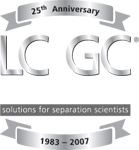
Now, 25 years later, I write on the direct descendants of those hardware and software platforms. The computers and applications are orders of magnitude faster and more capable, but fundamentally they are not very different. If I were to send a modern-day laptop back 25 years to myself — I won't comment on just how that might be accomplished — I'd have little trouble understanding it or learning to use it, although I'd be impressed with the degree of integration of the mechanical and electronic parts. The same is true with modern chromatographs — the basic components and associated technologies are pretty much the same, but the level of performance and capability have increased tremendously and the degree of electro–mechanical integration is impressive. I'll discuss some of these areas briefly in this article.
During these 25 years the publishing process has become quite direct and nearly completely virtualized. I don't use a secretary to transcribe my terrible handwriting — in fact my handwriting has declined due to lack of use. I don't have to straighten the axes on my chromatograms — they're already precisely straight; if I want to make slides I just paste — in the virtual sense—the artwork and text into a presentation file; galley proofs are sent back and forth by e-mail and are corrected on-screen.
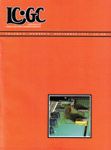
In my case, at least, I don't see my publications in a printed form until they, well, actually roll off the press and end up in my mailbox. With most content now published online, printed publications delivered in the mail may seem less relevant, but there are still a host of technical challenges to overcome before printed media become as obsolete even as film cameras are now. Perhaps the time will come when a device can bring universal access to online content in a format that's as convenient and at-hand as a magazine. But will it smell faintly of printers' ink?
One aspect of publishing hasn't changed over the years, however, and that is the absolute necessity that as many skilled people as possible review and correct manuscripts. I rely heavily on the skilled editorial staff at LCGC to maintain consistency of style and scientific content, and to ensure that submitted materials are in line with the magazine's goals and aspirations. Kudos to them for their hard work and dedication!
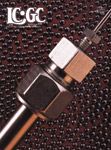
Some Top Developments in Gas Chromatography
It's impossible to cover an entire scientific field across a quarter-century in an article such as this; so instead I'll fall back on personal judgment and then rely on those readers who have a different opinion to make their points of view known. I have purposely omitted literature references to conserve space. For what it's worth, here are some of the top developments in GC that have evolved along with LCGC.
Flexible fused silica columns: I list fused silica columns first because they represent an enabling technology that has made possible many significant changes in the practice of GC, as well as engendering the present surge in capillary electromigration techniques. In 1983, fused silica column material as we know it today had been available for only four years. The use of quartz as a drawn column material was demonstrated by Desty as early as 1959, and the idea was pursued by him and others in the years leading up to 1979. None of this early work produced flexible column material, however.

John V. Hinshaw's First GC Troubleshooting (Vol. 5, Number 9, 1987)
I vividly recall obtaining a 25-m length of flexible fused silica column tubing material while in graduate school in 1979, some months after the announcement by Dandenau and Zerenner at the Third Hindenlang Symposium of their breakthrough in flexible fused-silica column production on optical-fiber drawing machines. I painstakingly coated and installed the polyimide-clad tubing. I made an injection and temperature programmed the oven to about 250 °C. A couple of peaks emerged, but then the baseline plunged to zero. Upon opening the oven door I discovered that the column had become a bundle of about fifty short column pieces — each break marking precisely its point of contact with the column cage. My first attempt to work with the material had ended almost as soon as it started, but later that year I would embark on a project to bring fused silica column manufacturing in-house at an instrument company, and soon my lab benches would be buried in piles of fused silica columns. By 1983 most of the early problems had been solved, and from then on fused silica material gained market share in the column business on a steeply sloped curve.
In 1983 fused-silica columns helped foment the debate whether open-tubular columns would ever overtake and even supplant packed columns. The accuracy and reproducibility of split/splitless inlet systems was often questioned at meetings and in publications, sometimes accompanied by vigorously defended personal positions. Certainly, the superior performance of fused silica along with advances in inlet technology such as cold on-column and programmed-temperature injection helped promote open-tubular columns, but it was the practical nature of working with fused silica column material as much as anything that eventually brought about the wholesale replacement of packed columns. Flexible fused silica tubing was so much easier to install and use that most of the few chromatographers who could successfully straighten the ends of borosilicate columns and install them without breakage quickly switched. The rest of us who didn't possess particularly good glassblowing skills were relieved to find that our shortcomings in that area no longer would be revealed.
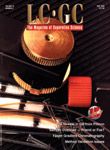
More recently, parallel developments from the semiconductor industry have produced techniques that allow thin silica coatings to be deposited on metal surfaces. In modern GCs, inert silica-based surfaces that extend all the way from syringe needles and inlets to guard columns and on through to mass spectrometric detector ionization sources present difficult or sensitive samples with little opportunity for adsorption or decomposition.
Comprehensive (GC×GC) gas chromatography: Comprehensive chromatography, which can be abbreviated GC×GC when two stages of GC separations are utilized, is a multidimensional separation technique. Multidimensional gas chromatography is not a new concept — it's almost as old as GC itself. Chromatographers have applied multiple columns to difficult separation problems in a variety of ways. Long before LCGC got its start, researchers knew that placing two columns in series — each with a different stationary phase — would yield results roughly equivalent to mixing the stationary phases in a single column. By 1983, a number of available techniques provided ways to improve coupled-column performance dramatically by stopping and redirecting selected peaks as they move through the chromatographic system. In heart-cut systems, only a portion of effluent containing unresolved peaks of interest is redirected from one column into another for subsequent resolution. Prior and following peaks from the first column are not passed into the second column, so they no longer would interfere with the redirected peaks' separation. The addition of effluent trapping at the start of the second column exposes the selected analytes to its full resolving power. The next decade brought an expansion of these techniques into many application areas, due in part to the ease of using fused-silica material as well as to the increasing general use of open-tubular column technology.
Comprehensive GC×GC was described by J.B. Phillips in 1991. As the name implies, comprehensive separations apply all the available resolving power of both columns in a coupled system to all the peaks in a sample, instead of trapping and redirecting just one or a few selected portions of the first-column chromatogram. In GC×GC, each peak transits the first column, is trapped in place, and then is released onto the second column. The major difference between GC×GC and heart-cutting is that in GC×GC the trapping time and second-column separation speeds are fast enough so that a continuous series of heart-cuts can be analyzed in the second column over the course of a single first-column run. These operations yield composite two-dimensional chromatograms with the selectivity of each column applied to each analyte, which exhibit greatly enhanced resolving power.
In the ensuing fifteen years a wide variety of comprehensive systems have been described in the chromatographic literature. The technique has made possible the elucidation of highly complex mixtures in ways not possible before. Although it is complex and requires higher levels of expertise for success, comprehensive GC×GC rapidly is becoming more accessible and now is the subject of a number of method standardization efforts. I look forward to the broader deployment of this still-evolving technology.
Digital control of pressures and flows: Parametric control in GC instrumentation has benefited tremendously from parallel technological advances in computing and material science over the past 25 years. Gas chromatographic separations are highly sensitive to minute fluctuations in flow and pressure. Prior to the late 1980s, control of GC pressures was a strictly mechanical affair in commercially available instrumentation. Manual pressure and flow controllers performed well but were subject to variability when setpoints were changed, and they were sensitive to fluctuations in ambient temperature. The desirability of programmatic pressure control was well understood from a largely theoretical point of view, but available implementations involved gear-driven mechanical regulators that weren't up to the task.
Electronic pressure control became available in commercial laboratory GCs in the late 1980s and then rapidly spread as refinements reduced the costs of the electro–mechanical components and faster processing speeds improved the operability. Today it is the standard gas control methodology in GC. Mechanical pressure regulators are ubiquitous outside gas chromatographs at gas tanks and as in-line controllers in gas distribution systems, but the fraction of new GCs that don't include electronic pressure control is shrinking rapidly. Besides delivering superior control and resetability, electronic pressure control enables additional modes like constant flow or average carrier gas velocity, and it facilitates ancillary techniques like pressure-pulsed injection or multidimensional separations.
Miniature and micro gas chromatography devices: One almost inevitable chromatography instrumentation trend is towards smaller separation systems. Chromatographers have pursued two primary approaches in this area. First is the miniaturization of traditional GC devices. The now widespread availability of open-tubular columns heated by integral resistance heaters is a good example. Direct resistance heating is not a new idea — such devices had been made as early as the 1960s — but it is one that required the confluence of fused-silica columns and other advances to become truly practical for open-tubular column systems. Much less space is required for resistance-heated columns because a traditional large air-bath oven isn't needed in many cases, although these columns often are found inside the thermally stable environment of the large GC ovens. Other advances include the shrinking of GC detectors, primarily the thermal conductivity detector (TCD), and to some degree inlets, but here we encounter some physical limitations for liquid injection due to the minimum injected sample size of around 0.5 μL that can be delivered accurately and reproducibly. Resistance-heated columns reduce power dissipation by more than an order of magnitude, which shrinks the corresponding power control components' size, while the analog and digital electronics packages that handle data acquisition and control have shrunk considerably as well. The larger conventional laboratory instruments continue to dominate due to their flexibility and backwards compatibility, but smaller and more dedicated instruments are becoming more significant, especially as field-portable instruments.
A second direction towards smaller GC systems moves the active separation out of discretely drawn fused silica tubing into the arena of columns etched into silicon wafers or other materials. Again, this is not a new idea: efforts to make practical micromachined capillary columns along with the concomitant inlets, detectors, and electronics support have been around at least since LCGC got its start. I have on my desk one such column attempt from around 1986 that is a testament to the difficulties associated with this aspiration. Today there are several companies actively involved in this field across the width of the various chromatographic techniques in addition to gas chromatography. A number of ongoing university projects have made great strides towards even smaller devices, including not just columns but entire integrated systems, with the potential for realizing practical autonomous GC systems. I am confident that the next ten years will see this revolution in separation science take off and eventually place practical separation tools with advanced capabilities literally in the hands of chromatographers.
Happy Anniversary
In closing, I want to wish a happy 25th Anniversary to the management, staff, columnists, and contributors, past and present, of LCGC. I hope that future years will bring as many exciting developments and advances in the chromatographic fields as the first twenty five and that the magazine will continue to foster the attention of its readers and advertisers through its unbiased and germane coverage of all aspects of chromatography.
John V. Hinshaw "GC Connections" editor John V. Hinshaw is senior staff engineer at Serveron Corp., Hillsboro, Oregon, and a member of LCGC's editorial advisory board. Direct correspondence about this column to "GC Connections," LCGC, Woodbridge Corporate Plaza, 485 Route 1 South, Building F, First Floor, Iselin, NJ 08830, e-mail lcgcedit@lcgcmag.com For an ongoing discussion of GC issues with John Hinshaw and other chromatographers, visit the Chromatography Forum discussion group at http://www.chromforum.com.
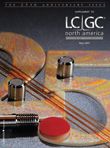
RAFA 2024 Highlights: Contemporary Food Contamination Analysis Using Chromatography
November 18th 2024A series of lectures focusing on emerging analytical techniques used to analyse food contamination took place on Wednesday 6 November 2024 at RAFA 2024 in Prague, Czech Republic. The session included new approaches for analysing per- and polyfluoroalkyl substances (PFAS), polychlorinated alkanes (PCAS), Mineral Oil Hydrocarbons (MOH), and short- and medium-chain chlorinated paraffins (SCCPs and MCCPs).
Pharmaceutical excipients, such as polyethylene glycol-based polymers, must be tested for the presence of ethylene oxide (EtO) and 1,4-dioxane as part of a safety assessment, according to USP Chapter <228>.